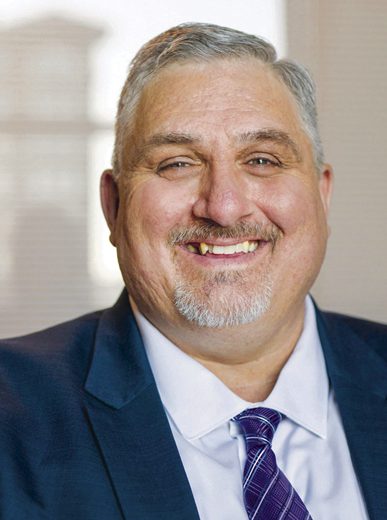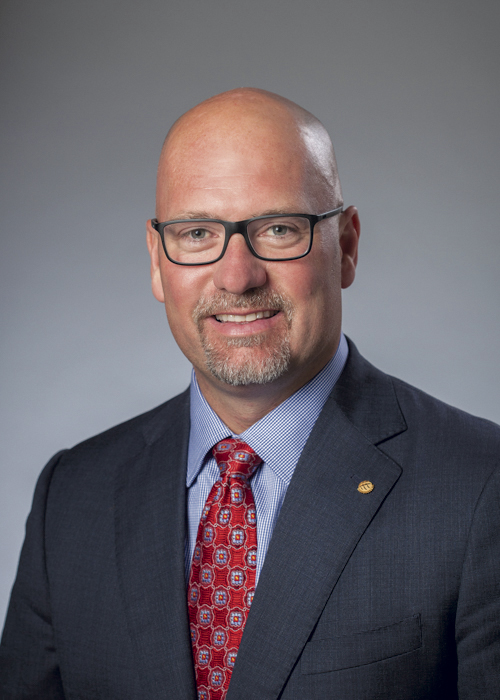RISK RETENTION FOCUS DRIVES STOP-LOSS GROWTH

RISK RETENTION FOCUS DRIVES STOP-LOSS GROWTH
Even small employers can self-fund and leverage market innovation and expansion
By Len Strazewski
When healthcare costs rise 10% or more each year, employers take aim on ways to not only reduce the cost of medical claims, but also the cost of paying and administering claims.
For decades, the answer for large employers has been self-funding health insurance claims, hiring outside third-party administrators and securing claims with their own financial resources. Such activities have forced benefit cost increases down, sometimes below double digits. Slowly small employers with only a few hundred employees discovered ways to use the same approaches: self-funding a portion of their predictable costs with administrative-services-only contracts with their health insurers and stop-loss insurance protection against large claims.
Today, even small employers with fewer than a hundred employees can self-fund, taking advantage of innovation and expansion of the stop-loss insurance market and the growth of group employee benefit captive insurers.
Is economic pressure from struggling employers driving the growth of benefits self-funding and the stop-loss insurance market? Not really, says Mike Hoefler, vice president of stop-loss at Sun Life Financial in Wellesley Hills, Massachusetts.
“The real development is innovation in the stop-loss market, which is a reaction to research and development in risk retention,” he explains. “The stop-loss industry is unique in that we have companies that have bundled stop-loss insurance with administrative services,” which provide discounts to the expense of funding medical claims.
Specialty companies, managing general agencies that represent international capacity, and major health insurers that provide stop loss as part of their administrative services also drive competition.

“One of the best aspects of self-funding is that it allows employers to select their own plan design, but an important consideration is ensuring that the stop-loss policy mirrors the plan document.”
-Mark Lawrence
Senior Vice President of Underwriting
HM Insurance Group
Mark Lawrence, senior vice president of underwriting at HM Insurance Group in Pittsburgh, Pennsylvania, agrees that the stop-loss market is growing and changing in response to expanding need and evolving strategic resources. “The stop-loss market is changing all the time,” he observes. “Most agents and brokers want options for their clients where they are confident that premiums are fair, the risk is understood, and claims will be paid.
“On the premium side,” he adds, “the market is competitive. There’s lots of competition, and that’s a good thing. However, most agents and brokers understand that you get what you pay for. There’s an element of matching the stop-loss carrier to the employer’s needs and expectations. There are plenty of risk and pricing features that give clients flexibility in their purchase.”
Among the recent plan options are group benefit captives that allow small employers to collaborate in the formation of captive companies that provide risk-sharing and level-funded plans. These allow small to medium-sized employers to self-fund reduced portions of risk with stop-loss insurance that attaches at lower-than-usual levels.
The level-funded plans, most often sold by large traditional health insurers, allow employers, often with 50 employees or less, to pay a monthly premium that includes a portion of estimated claims, administrative expenses and stop-loss premiums with an annual opportunity to reconcile costs and receive some payback.
Demand is clearly growing, according to industry research. The Kaiser Family Foundation polled more than 4,000 employers in 2018 with more than half responding to questions about employee benefit plans and their funding. The survey revealed that the number of employees covered by self-funded benefit plans has been relatively stable for the past few years, at about 61% of the respondents, with the greater percentage of employees of large employers in self-funded plans.
About 91% of employees from companies with 5,000 or more employees are in self-funded plans, and 87% of employees in medium-sized employers with 1,000 to 4,999 employees are in self-funded plans. Even half of the employers with 200 to 999 employees are in such plans, and nearly 10% of employees in small businesses under 100 employees are in self-funded programs.
Of those employers that are self-funded, about 90% purchase stop-loss insurance against some level of large individual claims or high aggregate claims.
The survey also indicates that about19% of small employer respondents buy level-funded benefit plans. However, since the plans include a monthly premium, some don’t realize that the design is a method of self-funding with stop-loss insurance built in.
Stop-loss insurance is becoming increasingly sophisticated, the insurers say, with plan designs that integrate the coverage with employee benefit models and also allow for risk sharing among groups of small employers.
“Stop-loss policies have added features over the last number of years,” says Lawrence. “This allows more policy customization, which benefits the employer. One of the simplest but most valuable features is a stop-loss policy that mirrors the employer’s plan document. When you consider one of the best aspects of self-funding is that it allows employers to select their own plan design, it’s important to ensure that the stop-loss policy mirrors the plan document so that there are no unintentional gaps in coverage.
“Brokers and agents, as well as employers themselves, should evaluate any gaps in coverage that may exist between the plan document and the stop-loss policy,” Lawrence explains. “Less costly stop-loss policies with coverage gaps may represent a classic upside/downside risk equation that becomes problematic for all parties. The financial upside of a lower premium up front may not be worth the downside of dealing with unpaid claims due to coverage gaps.”

“The real development (driving the growth of benefits self-funding and the stop-loss insurance market) is innovation in the stop-loss market, which is a reaction to research and development in risk retention.”
-Mike Hoefler
Vice President of Stop Loss
Sun Life Financial
Hoefler agrees that the growth of competition can create some vulnerability. While new competition and contracts such as new one-year renewable stop-loss policies have led to somewhat lower premiums and competitive flexibility, they may also lead to a lack of continuity of coverage and mistakes made by recent entries to the marketplace.
“The cost of entry to the stop-loss and self-funding consulting is zero,” Hoefler says. “For some, research and development is just a photocopy machine.”
Captive insurance companies specializing in employee benefits are also an expanding aspect of the self-funding and stop-loss market, the insurers say. Long used by large employers to fund workers compensation and other property/casualty risks in offshore domiciles, benefit captives in onshore domiciles have been growing rapidly and group benefit captives make the risk-sharing technique available to small companies, too.
“From my perspective,” Lawrence says, “captives can be a valuable risk management tool for the right market, and we currently work on some cap-tive arrangements. The emergence of captives has been an interesting development in this market. Moving from a fully insured medical policy to self-funding health benefits and buying a stop-loss policy adds a layer of complexity for most employers.
“Running a portion of the self-funded risk through a captive adds another layer of complexity,” he explains. “For brokers, agents and employers alike, it’s important to understand the risk being assumed, the costs, the maximum upside, and the maximum downside. I think it’s important to add that almost every employer who would like to self-fund its benefits can get a quote or multiple quotes without the benefit of a captive.”
Hoefler notes that a group benefit captive does indeed provide benefits for small employers, but also involves some risk. Employers that participate in a group captive are also participating in their association’s collective risks, and the captive’s stop-loss protection should be calculated to protect participants from unexpected and large specific and aggregate claims costs.
Cost control is also an essential component of the package of services employers need to manage their costs, he says. In addition to stop-loss financial insurance, employers need to increase their cost containment efforts by working with their stop-loss insurers. He points out that Sun Life provides cost containment consulting and plan documents review in addition to stop-loss capacity.
Hoefler says Sun Life has made great progress in containing the cost of some of the most expensive claims, including dialysis, transplants and other very expensive procedures, by identifying centers of excellence that have documented best outcomes and minimized costs.
The insurer also works with pharmacy benefit managers to reduce the costs of specialty drugs, one of the fastest growing claims categories, he says.
Lawrence notes that self-funding with stop loss should not be undertaken without the support of experienced agents and brokers. “Clients who are exploring self-funding first and foremost should be working with brokers and agents who understand self-funding,” he says. “There’s a big difference between sending a check to a fully insured carrier once a month and setting up your own health insurance plan, becoming a fiduciary to your employees for their health benefits and managing the risk that comes with that decision.
“A good broker can make that transition relatively painless,” Lawrence adds. “Buying stop loss is an important part of that process. High-dollar medical claims are inherently unpredictable, and that’s why it’s important to buy stop-loss coverage at thresholds the employer is comfortable with. Buying stop-loss coverage from a well-rated carrier with a great track record of paying claims should provide any employer the security and peace of mind they need to focus on running their business and not managing their health plan.”
For more information:
HM Insurance Group
www.hmig.com
Sun Life Financial
www.sunlife.com
The author
Len Strazewski is a Chicago-based writer, editor and educator specializing in marketing, management and technology topics. In addition to contributing to for Rough Notes, he has written on insurance for Business Insurance, the Chicago Tribune and other publications.











